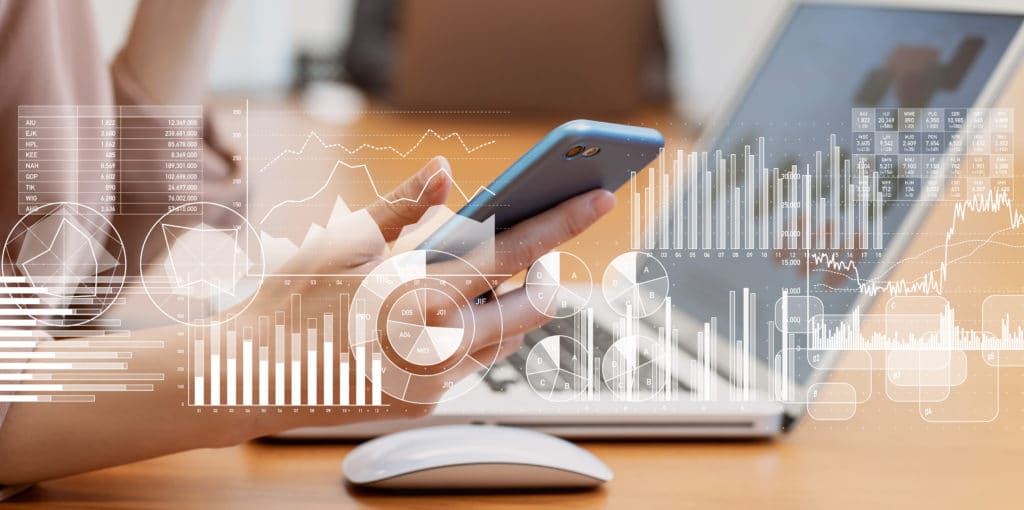Are you a QSR who’s still unconvinced that mobile order ahead is the way of the future?
We don’t blame you for being cautious, but mobile ordering is a trend that’s showing no sign of slowing, and the longer companies wait to get on board, the harder it’ll be to catch up. If you’re still unsure, maybe a few of these statics will change your mind.
1. Mobile orders are projected to make up 11% of all QSR sales by 2020
Taking a broad look at the industry as a whole, it’s clear that mobile is the future of the QSR industry. Projections estimate that over 10% of all Americans already used some type of mobile payment as far back as 2016—and as we move closer to 2020, it’s expected that more than one out of every ten QSR orders will be made through a mobile ordering system.
2. Only 45% of QSR customers prefer to place orders through employees
There are still a few customers out there who prefer a traditional approach to ordering, but these numbers are shrinking as time goes on. It’s hard to match the high level of customer service you achieve with a friendly, helpful staff, but with the right mobile ordering tools, you won’t have to. The convenience of on-hand, off-premise ordering can easily outweigh the familiarity of in-person ordering, particularly from a revenue perspective.
3. 25% of consumers spend more on off-premise orders
Research shows that customers pay more when ordering off-premise (ordering ahead or delivery) compared to dining-in. This could be explained by off-premise customers having more time to browse the menu, or being more willing to indulge their cravings in privacy, but either way, restaurants without these ordering capabilities may be missing out on this revenue. Think of this as a reason to start implementing a mobile order ahead strategy, if you haven’t already.
4. On-site meal pickup is still the most popular choice
Although delivery is a popular choice for off-premise food ordering, research shows that, in general, it’s actually less popular than placing an order online and picking up in person. In one survey of consumers, respondents were asked to rank their ordering preferences among the following choices:
- On-site food pickup through branded app (57.7%)
- Delivery through branded app (51.5%)
- Delivery through third-party app (33.5%)
- On-site food pickup through third-party app (31.2%)
The above data shows the percentage of customers who agreed that they were either “somewhat likely” to “extremely likely” to place an order through that channel. And without question, QSRs with their own branded apps come out on top.
5. U.S. restaurant visits paid by mobile app increased by 50% from 2017-18
Aside from being more proof of mobile ordering’s meteoric rise over the past few years, this data (provided by global intelligence company The NPD Group) speaks to the need for innovation. Smaller QSRs might not believe that mobile ordering solutions could substantially increase their traffic, but those who aren’t innovating risk falling behind.
“…the ability to easily order food from a restaurant is no longer a nice-to-have, it is a need-to-have.”
– Warren Solochek, NPD’s senior vice president, industry relations.
6. Mobile represents 60% of all digital restaurant orders today
Further research from NPD Group details the prevalence of mobile ordering as it exists today: Mobile represents 60% of all digital restaurant orders. There are plenty of reasons why: Customers love convenience. They love the ability to customize their orders from a dashboard. They love the built-in loyalty programs and benefits that come from branded apps. Mobile order ahead solutions give them the best of these perks while affirming your company’s commitment to digital convenience.
7. Since 2014, digital ordering has grown 300% faster than dine-in
Still wondering whether a mobile order ahead platform makes sense for your business? Consumers are used to doing pretty much everything online these days, and food ordering is no exception. QSRs are living in the era of digital transformation, and companies that don’t embrace the changes will quickly fall behind.
8. 13% of total U.S. Starbucks transactions are made through its Mobile Order & Pay
For a business the size of Starbucks, this is a huge percentage. Starbucks has long been considered a global innovator in mobile payment solutions, adopting the mantle of mobile payments long before it became a QSR best practice. And while few QSRs have the resources of a company like Starbucks, this data illustrates just how powerful a mobile order ahead solution can be for the right enterprise.
9. 80% of merchants use Samsung Pay—even though it’s the least popular option for shoppers
There’s a bit of a disconnect in what QSRs companies provide and what consumers expect. For example, consider that 4 out of 5 merchants accept Samsung Pay, despite the fact that it’s one of the least popular consumer payment options. Consider this a lesson in customer experience management. The last thing you want is to lose customers at the point of purchase because you don’t accept their preferred payment provider.
10. 45% of customers agree that mobile ordering options encourage them to use online ordering more often
This is another one that comes back to revenue. Customer experience management is all about convenience, and to maximize revenue potential, your business needs to provide the ordering options that your market wants. And with data showing that mobile ordering options increase the odds of online ordering, a mobile, order-ahead solution is a no-brainer.
The Future of Mobile Order Ahead
In truth, it’s not fair to call mobile order ahead of the future of QSR. It’s not the future at all—it’s already here. Plenty of businesses have already gotten on board with the practice and have moved into deeper discussions of strategy. And as these statistics demonstrate, the push is happening fast enough that companies who wait to adopt will surely get left behind.

